PRIMARY 6 ArtS and Crafts





The following people have worked on this book:
Editorial team: M. Ángeles Andrés, Paolo N. Gallucci, Morag Gunson.
Design and technical drawings: Patricia G. Serrano, Paz Franch.
Illustrations: Inés Burgos.
Layout: Raquel Horcajo, Aurora Martín.
Corrections and proofreading: Sergio Borbolla.
Graphic edition: Nuria González.
Photographs: AGE Fotostock (Brigitte Merz/Look; Robert B. Fishman/Zoonar GmbH RM; Stephanie Ott/dpa ), Alamy/Cordon Press (Artefact; Azoor Photo; Cinematic Collection; Everest Collection Inc; Heritage Image Prtnership Ltd; IanDagnall Computing; Masterpics; Photo-Fox; PictureLux/The Hollywood Archive; Steeve-x-art; The Picture Collection; United Archives GmbH; ZUMA Press, Inc.), Album (Chirstie’s Images/Bridgeman Images; EFE; Erich Lessing; Estorick Collection/Bridgeman Images; Fine Art Images; Oronoz; Xinhua via ZUMA Wire), Archivo Anaya (Cosano, P.; García Pelayo, A.; Hernández, B. M.; Martin, J.; Martín, J. A.; Martínez, C.; Ruiz, J. B.; Vázquez, A.), Dreamstime/Quickimage (Featureflash; Joe Sohm; Nuvisage; Tinamou; Vyychan), Getty Images (George Stroud/Hulton Archive), Istockphotos/Getty Images (ApfDesign; FatCamera; JadeThaiCatwalk; Master1305; SDI Productions ), María José Ruiz Navarro, 123RF y colaboradores, Scala Picture Library (Christie’s Images, London; Digital image Whitney Museum of American Art).
This work may contain links to external pages and sites, which ANAYA does not edit, control, supervise and/or maintain, and ANAYA cannot take any responsibility for the content in these pages and websites.
Arts And CrAfts 6 GLOBAL ACtIOn - BL002043 - 3100127
© Text: Beatriz Basanta Pernas, Paula Pancorbo Battaglio, Beatriz Velázquez Redondo, 2023.
© This edition: GRUPO ANAYA, S.A., 2023 - Valentín Beato, 21 - 28037 Madrid - ISBN: 978-84-143-3086-9
D. L.: M-12543-2023 - Printed in Spain. All

What will you learn?
1.1 With great precision
Reflect on why it’s important to value education that trains us for a dignified profession in adulthood.
2 Exploring the visible and the invisible
Decent work and economic growth

• Geometrically designed stars
• Parallel and perpendicular lines
• Design using multiview orthographic projection

• The design of buildings in cavalier perspective
1.2 Let’s go to the cinema!
• Animated cartoon characters in films
• Cinematic shots
• Set design
• Art styles: Brenda Chapman and Tim Burton
2.1 Genres and their techniques
• Landscape and perspective
3 Develop your artistic talent
There are many female artists in art history. We know this thanks to research carried out on the history of women.

• Still life and the volume of objects
• Portrait and its context
• Canon and the human body
2.2 From realism to abstraction
• Distorted reality
• Figures fragmented by geometric shapes
• Figure-ground relationship
• A design with stars
• A composition with parallel and perpendicular lines
• The design of a fire engine using multiview orthographic projection
• The design of a house in cavalier perspective
• Animated cartoon characters
• From a wide shot to a close shot
• Set for a moonlit night
• Create your own style
Build:
• A fire engine (page 65)
• Christmas lantern (page 67)
Paint:
• A house that inspired a film (page 73)
Gender equality
• Abstraction, painting the invisible
• Arts styles: Pablo Picasso and Hilma af Klint
• Perspective using collage
• Light and shade on objects using line art
• A 21st century nobleman
• Proportion of the human body
• Grid deformation
• A seabed with fragmented figures
• A visual figure-ground game
• Steps from realism to abstraction
• Create your own style
3.1 A style of its own
• The sense of touch in art
We still have time to stop climate change if we all contribute to changing our behaviours (recycle, use a bicycle, etc.).
• The artist’s palette
• Symmetry and compositional balance
• The artistic language of a pencil stroke
3.2 My self-portrait
• The face in semi-profile
• Artists and their symbols
• Portrait and photomontage
• A composition of textures
• My colours define me
• A symmetrical composition using collage
• Personality within a pencil stroke
Build:
• A game to discover female artists (page 69)
Paint:
• A realistic owl (page 75)
• Geometric abstraction (page 77)
Climate action
• Emotions in a portrait sculpture
• Art styles: Frida Kahlo and Salvador Dalí
• A 3/4 profile portrait
• Contouring in the representation of objects
• A photomontage portrait
• Modelling emotions
• Create your own style
Build:
• A slide for World Environment Day (5 June) (page 71)
Paint:
• Book Day information card (23 April) (page 79)
What do you think?




What profession do you want to work in when you are older?





Do you know what you need to study to achieve it?










This project offers you the whole course content in an active textbook, as well as a wide range of other resources. Discover a whole new way of learning that is simple, intuitive and compatible with any platform and device.
How can you access your book?
You’ll find all of the information you need on the first page of the book.
It is:
A global response to a diverse learning environment.
Intuitive
Easy to use.
Multi-device
You can use it with any kind of device (computer, tablet, smartphone...).

Downloadable
It allows you to work without an internet connection and download it on more than one device.

Synchronisable







A huge variety of resources: it is so much more than a simple copy of the printed book. You’ll be able to use it to: Practise with interactive activities



Learn with audios, videos, a game room...

Test yourself with self-assessments, portfolios...


Any changes you make are synchronised automatically when you connect any of the devices you are using it on. Universal Compatible with all operating systems, and the most widely used virtual learning environments (VLE) and learning management systems (LMS) in schools.
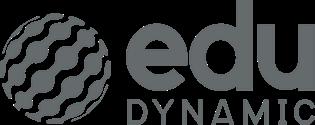



Hard wax crayons






Thick felt-tip pens



Lead pencil

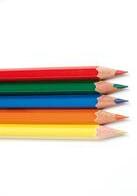



Coloured pencils


Recycled materials

Tempera paints




Coloured paper


Glue stick


Scrap paper

Children have the right to not work. Child labour deprives boys and girls of time to play and study and causes health problems.
What profession do you want to work in when you are older?
Do you know what you need to study to achieve it?

According to UNICEF data, more than 150 million children between the ages of 5 and 17 work.


Reflect on why it’s important to value education that trains us for a dignified profession in adulthood.
Geometric designs are characteristic of Islamic art. This type of decoration is based on a combination of circles, polygons and stars with three, six and eight points.
The eight-pointed star is formed by two superimposed squares, one of them is rotated at a 45° angel.
In the Islamic art style of tiles below we can see three types of polygonal stars.


How many points do the stars have?
3 4 5 6 7 8 9
CREATE
Follow the steps and complete the drawings of the eight-pointed stars. Colour however you like.

1 Draw two concentric circles and two lines.

2 Draw two squares joining the ends of the lines.
3 Draw two more lines that pass through the centre of the sides of the squares.
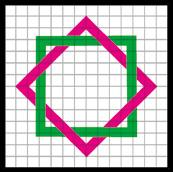
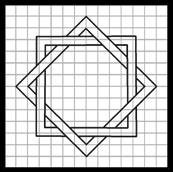


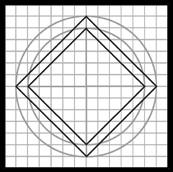
4 Join the ends of the new lines.

5 Rub out like this.
6 Colour however you like.



On the image on the right, go over the horizontal parallel lines with a red felt-tip pen. Then, go over the vertical parallel lines with a blue felt-tip pen.

How to draw parallel lines with a set square and triangle
1 Place the set square with the right angle towards you, place the triangle like the image and draw a line.
2 Move the set square down without moving the triangle and draw parallel lines.
How to draw perpendicular lines with a set square and triangle
1 Place the set square and the triangle like in the previous example and draw one or more horizontal lines.
2 Turn the set square clockwise until it rests on its other side and draw one or more perpendicular lines, moving the set square.
CREATE




Complete, using the distances marked, and follow the steps. Use a set square and triangle, and the colours you want.




The first step in designing a three-dimensional object is to draw it on a two-dimensional piece of paper using perspective; for example, we can display different perspectives using a technique called Multiview orthographic projection.
Multiview projection consists of representing an object by drawing its different views: front view, top view and side view.



Do




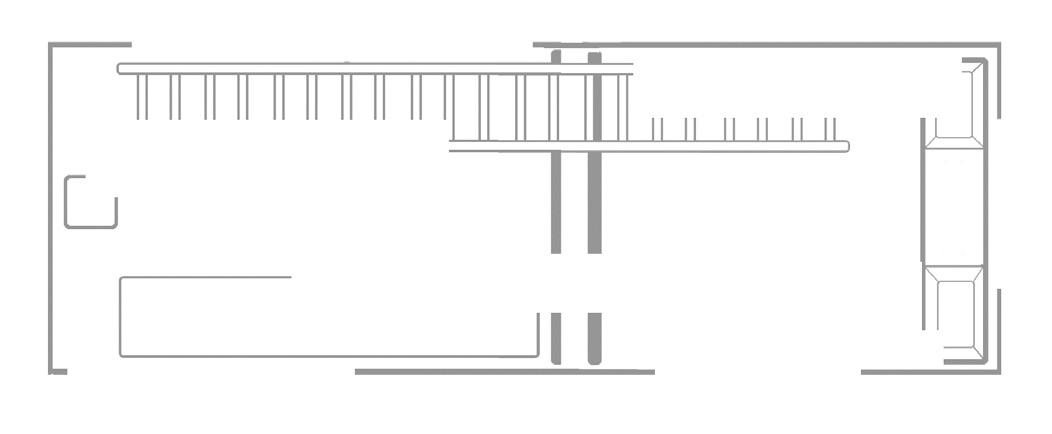







Three dimensions




Another method of representing an object on paper is by using cavalier perspective.
This method draws the three-dimensional objects with the help of three axes: z for height; x for width; y for depth.



In architecture, for example, cavalier perspective representations are made to have a global idea of the projects before developing them.




Follow the steps and complete the design of the house in cavalier perspective. Colour it in.






Many artists create animated cartoon characters to tell stories. A very famous animated cartoon character is Mickey Mouse. Walt Disney created him in 1927.
Any animal or object (fruit, car, toy, utensil...) can serve as inspiration to give life to a character, as long as it has identity and personality.








Look and convert the mobile phone, the mug and the guitar into cartoon characters. Then, create any new characters you want. Colour.





Cinema uses different shots to tell stories. The main ones are:


Wide (or long) shot: The characters are seen whole, from head to toe. This shot is used to put the character in a place and to show their relationship to that place or to other characters.
Medium shot: It frames the characters from the waist up. It gives importance to the subject and the background. It is used for dialogue scenes.
Close shot: It focuses on the character’s face and shoulders. It is used to show how the character feels because it enhances their emotions.

On the following wide shot, mark a medium shot and a close shot. Then draw them. Colour them in.






The set design is the set of visual elements used to set and represent a film, a musical or a play. The elements of the set are the decoration, the lighting, the characterisation (costumes, makeup), etc.
With a partner, describe the element of the set design in the image of The Lion King (decoration, lighting, colour, characterisation, etc.). Then answer:

a) Where does this set design transport us to?
b) What elements of the set design give you this impression?
Ideas pool Follow the steps and create a night scene using the elements you want.
1 Gather the following materials. Paint the outside of the box black.







2 Line the inside of the box with the blue paper. Paint the base grey.




3 Add a white splatter to create a starry effect.


4 On black cardboard, draw and cut out the buildings. Add details.


5 On white cardboard, draw, colour and cut out the rest of the elements.
6 Glue the elements onto two planes: in the background, the buildings, the moon and the cat; in the foreground, the rest.

Brenda Chapman (1962) is an American director, screenwriter and animator. She directed the film


The Prince of Egypt (1998) at DreamWorks Animation studios, making her the first woman to direct an animated feature at one of the major animation studios.
Later she directed other films such as Brave (2012), in which she created the character of a medieval lady who breaks with all the Disney stereotypes of princesses.

Tim Burton (1958) is an American film director, writer, and cartoonist. His films, inspired by great works of Gothic literature, are characterised by a highly original style, with unique characters and gloomy atmospheres that are loaded with details.

His favourite animation technique is stop motion, which consists of taking still photos of articulated dolls in different positions, to get a sense of movement. He has used this technique in films such as Corpse Bride (2005).



Draw a scene with the animated character you created on page 17




In this unit you have learned some of the fundamental techniques and resources used in many professions: design, architecture, film directing, animation, etc.


Using the thinking technique CAF (consider all factors), express why education, along with the advantages it offers, is so important.
1 Order the following from 1 to 4. Think about which ones you are good at and which ones you need to improve.
I understand the steps involved in drawing an eight-pointed star.

I am able to create compositions with parallel and perpendicular lines.


I can identify the different views of an object.

I can visualise how a three-dimensional object is represented in cavalier perspective.

2 Circle how you felt.

• Giving life to an object by turning it into an animated character.
• Experimenting with film shots.
• Composing a set design.
Learn more at anayaeducacion.es
• Creating a scene for an animated film.
In the fight for the recognition of female artists, the promotion of gender equality is essential. For UNICEF, gender equality means that women, men, girls and boys must have the same rights, resources, opportunities and protections.
Finding works of art by female artists in museums is difficult. For example, of the 1,218 paintings exhibited in the Museo del Prado, only eight are by women.
There are many female artists in art history. We know this thanks to research carried out on the history of women.

How many female artists do you know of? And male? Why do you think people know of more male artists than female ones?


Aerial perspective is used to represent depth in a landscape. It consists of using a progressive gradation of colour which can be achieved with collage, by superimposing pieces of tissue paper.
Observe the piece of art and match:
In the background of the picture. In the middle of the picture. At the forefront.
Beach sand and rocks. The mountains and the horizon. The sea.
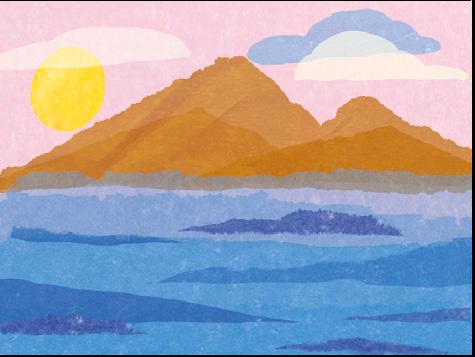


Tear or cut strips of coloured tissue paper and follow the steps.









Look and practise hatching.
Volume is the effect produced by light when projected onto an object, creating areas of clarity and shading.
Hatching is a line drawing technique that consists of superimposing crossed lines that form patterns to achieve light and dark areas; more lines are drawn to produce more shading.






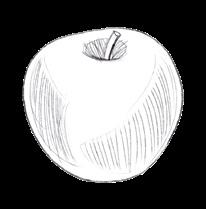

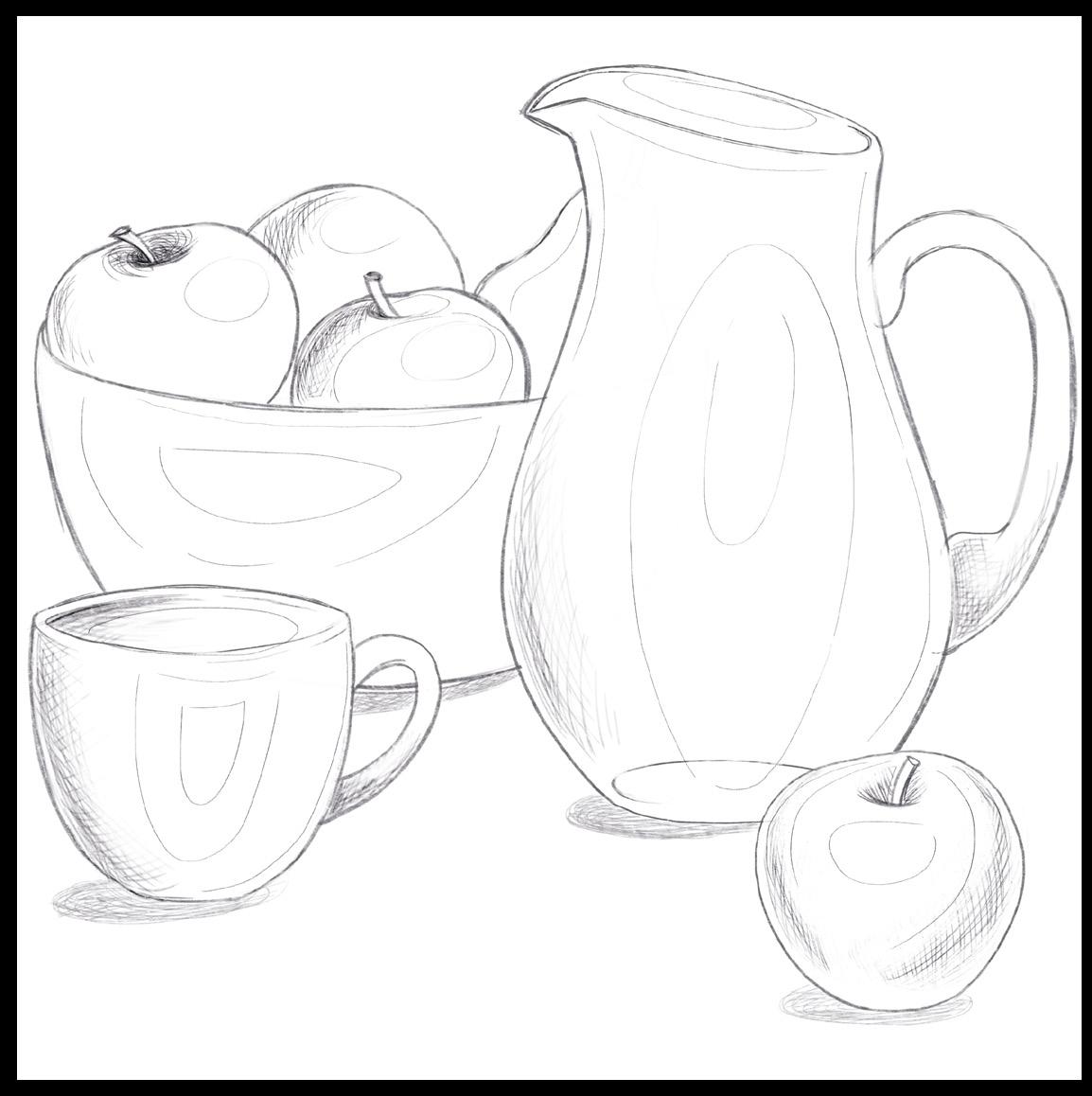
Thinking heads Look and follow the steps and complete the hatching technique to give volume to the still life objects.


Portraits, in addition to copying the features of the person, capture their character and personality. The context of the sitter is also very important: the period, clothing, fashion, environment.
Look at the portraits and, with a partner, describe the most distinctive elements of them: clothing, objects, accessories, etc.

Look and create a 21st century version of The Nobleman with his Hand on his Chest.






Do it virtually at anayaeducacion.es.



When representing the human body, it is necessary to understand its proportions. These ratios are different for boys, girls, and adults. In adults it varies between 7.5 and 8 heads.


Throughout history, civilisations have established ideal or perfect proportions of beauty, called canons.
For example, for the Greek sculptor Praxiteles (4th century BCE), the ideal beauty standard for an adult body is 8 heads.
Hermes and the Infant Dionysus, by Praxiteles (4th century BCE). Archaeological Museum of Olympia (Greece).

Aphrodite of Knidos, by Praxiteles. Roman marble copy. National Roman Museum. Palazzo Altemps. Rome (Italy).


Look and draw two adults using the suggested diagram. Colour it in.



Artists interpret reality and represent their ideas, sensations and feelings in their works, creating their own style. Sometimes, deformation forms a part of this iconic language.

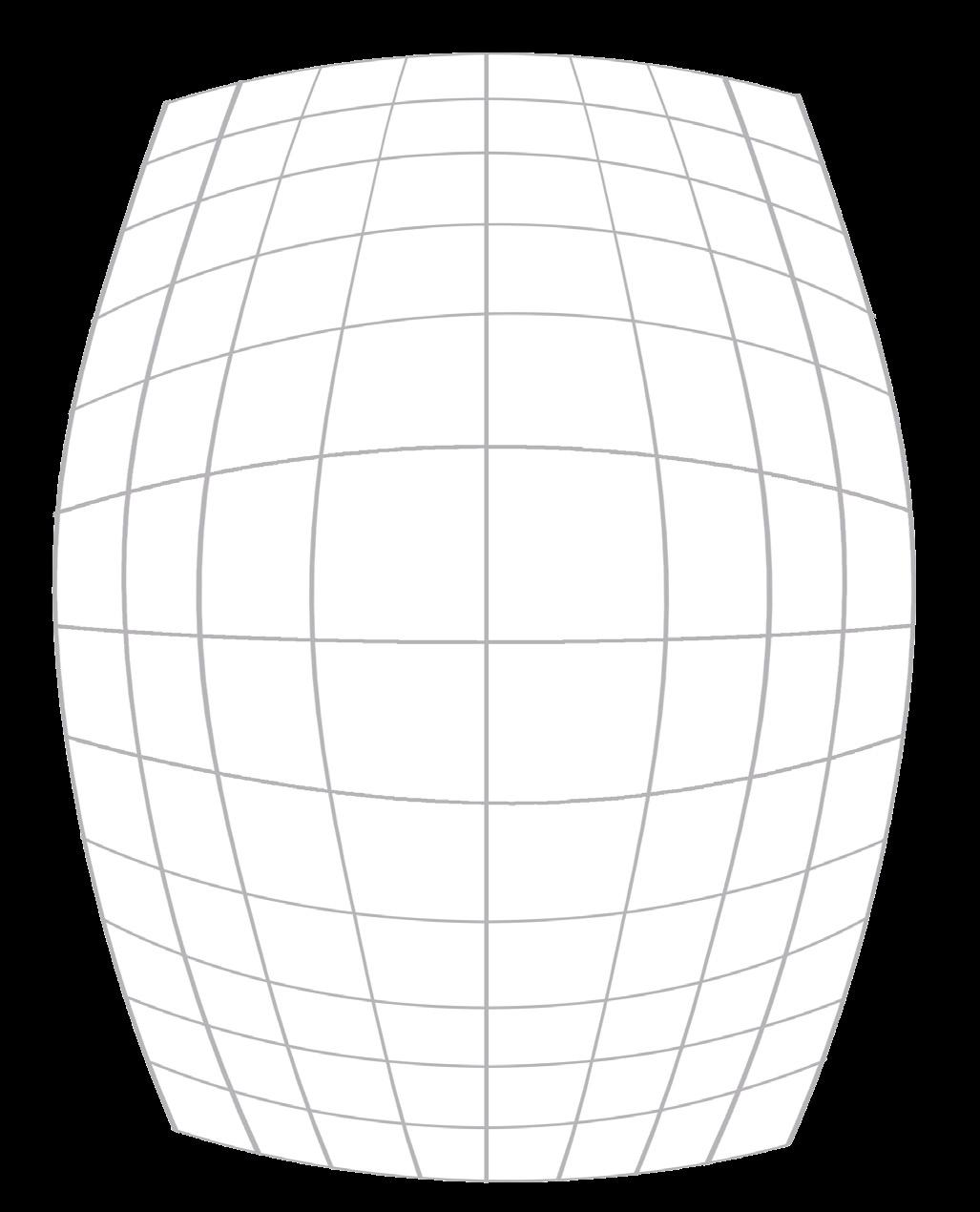
Draw the face represented on grid A onto grid B, adapt it in the same way as the eye at the bottom of the page.



Okuda San Miguel (Santander, 1980) is an artist who specialises in urban art. His style is characterised by fragmented figures created from geometric shapes in strong and vibrant colours.
Analyse the piece by Okuda San Miguel with your partner: what geometric shapes has he used?
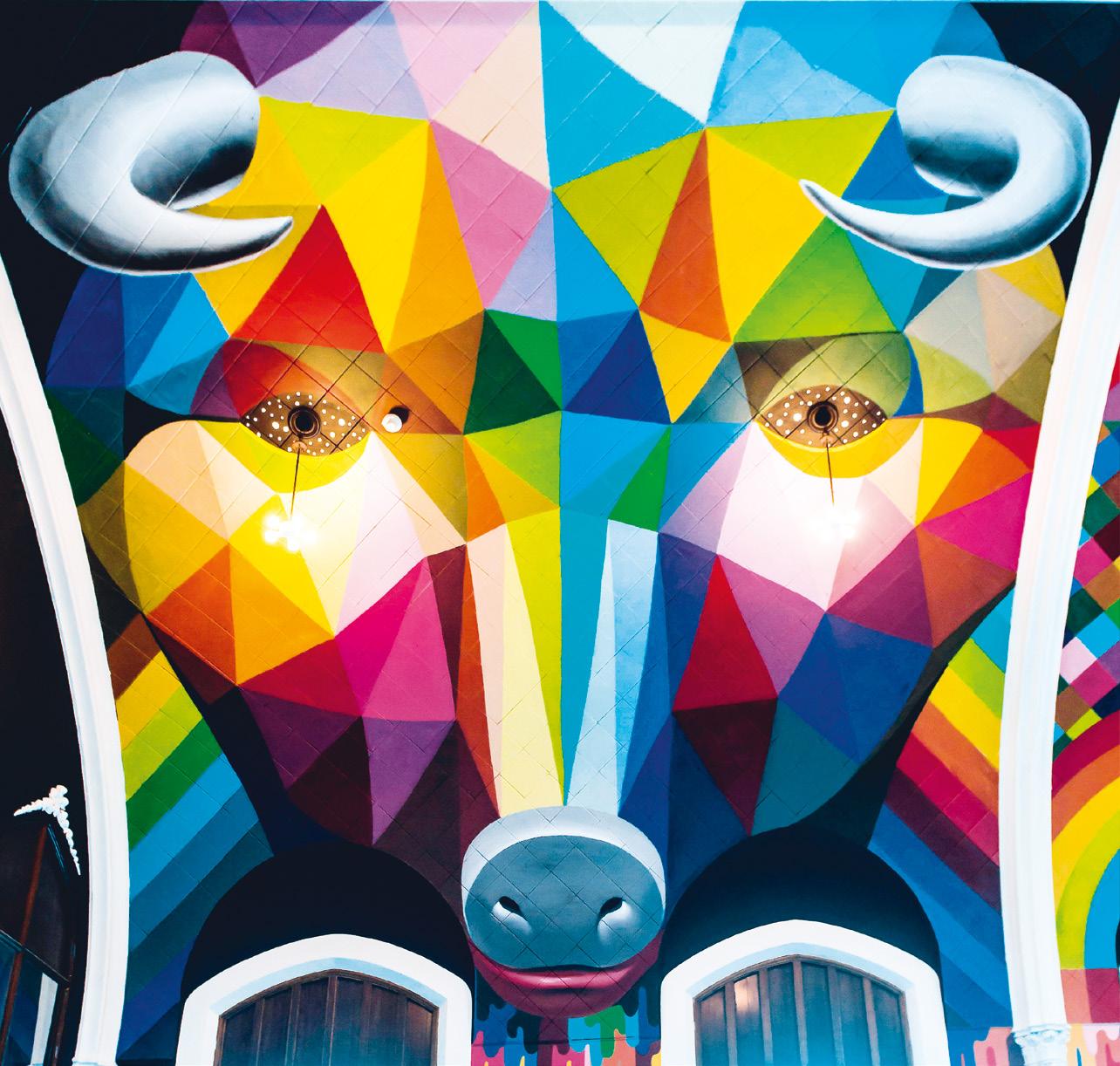




Follow the steps and colour.


Look at Escher’s work: What two figures appear in the composition? Which shape do you think is the most prominent? Which is the background? Draw them.

Two-dimensional representations are composed of a figure and a background. The figure is the shape with the most prominence. The background completes the composition.
There are some representations in which background and figure are confused. And depending on how it is observed, it becomes one form or another, the background or the figure.





Cut a sheet of paper in half, fold it in half and follow the steps.



In an abstract piece of art, we can’t identify what it represents.
In an abstract piece, the artist plays with colour, texture, lines and shapes to express feelings, thoughts; that is, the invisible inner world.








Abstract




Pablo Picasso (1881-1973) created the dove emblem of the First World Congress for Peace in Paris, in 1949. It is a lithograph of a white dove on a black background. The painter from Malaga manages to recreate the bird’s plumage using soft tones.

Hilma af Klint (1862-1944) was a Swedish artist known for pioneering abstract art. She created her first abstract paintings in 1906, before Kandinsky. She was an innovator who moved away from visible reality. Her works try to model the invisible. In the Dove series she explores the symbolism of birds.




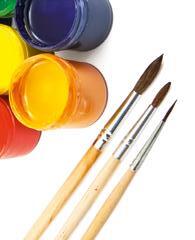
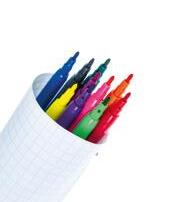




It’s possible that you didn’t know many women artists in art history. In this unit you have got to know works by authors such as Lavinia Fontana, Elizabeth Peyton, Hilma af Klint, Alma Woodsey Thomas...
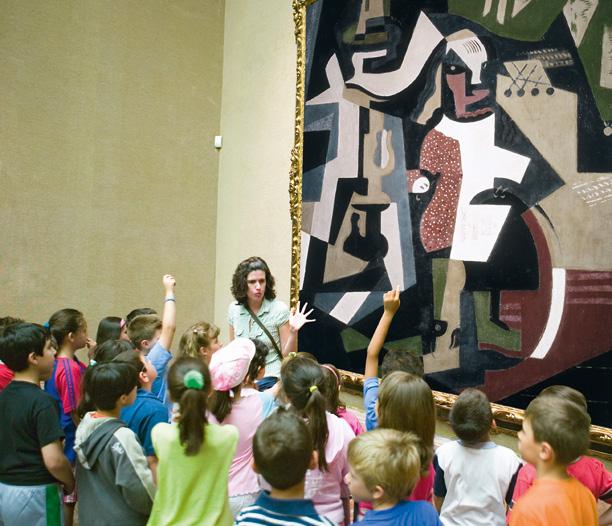
Using the thinking technique Before I thought…, now I think reflect on if you have changed your mind about the importance of women in art history.
1 Complete.
Creating a landscape with aerial perspective has…

Drawing everyday objects and giving them volume using the line technique has helped me to…
Analysing and identifying the context of a portrait has helped me to…
Using canon to represent the human figure has increased my knowledge of…
2 Think about the following aspects that you have worked on. Colour in.
I do it well I am learning I need to improve
Deforming elements of reality using a grid.
Fragmenting shapes by dividing them into geometric figures.
Creating a composition that experiments with background and the figure, by following the steps.
Creating figurative and abstract compositions.